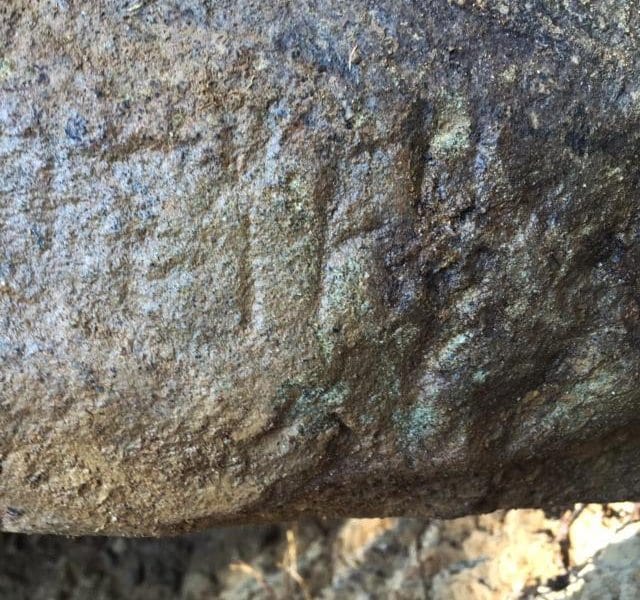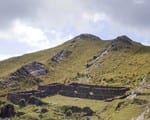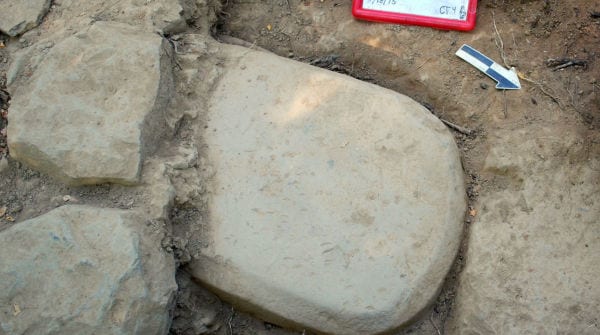Researchers found the inscribed slab near Florence and believe it might hold secrets behind the language of Italy’s pre-Roman culture
Science reporter Jason Daley with Smithsonian covered SMU sponsored research at Italy’s Poggio Colla site where archaeologists have found what may be rare sacred text in the lost language of the Etruscans. The text is inscribed on a large 6th century BC sandstone slab and could reveal name of the god or goddess that was worshipped at the site.
The article, “2,500-Year-Old Monument Could Help Crack the Mysterious Etruscan Language,” published March 31.
EXCERPT:
By Jason Daley
Smithsonian.com
We know a lot about the ancient Romans—from their legal system to how they liked to cook their chicken stew. We have thousands of monuments, books, and archeological sites detailing their accomplishments and famous individuals. But before 500 B.C. when the Romans took over, the Estruscans ruled the central and northern portion of the Italian peninsula. And this culture remains an enigma to modern archaeologists.Of particular mystery is the Estruscan language, which doesn’t seem related to other nearby languages. And researchers have uncovered few inscriptions or documents to help us figure it out—until now. Archaeologists of the Mugello Valley Archaeological Project recently uncovered a 500-pound, four-foot by two-foot stele, or monumental marker at Poggio Colla site, northeast of Florence. The sandstone slab originally stood in front of an Etruscan temple and is inscribed with 70 legible letters and punctuation marks.
“We hope to make inroads into the Etruscan language,” Gregory Warden, co-director and principal investigator of the project who made the discovery, says in a press release. “Long inscriptions are rare, especially one this long, so there will be new words that we have never seen before, since it is not a funerary text.”
Most of what historians know about the Etruscans comes from their elaborate burials, which are still sometimes found in the Italian countryside. But it has been difficult finding documents about their government, daily life, and other aspects of Etruscan culture. Even though scholars know they were one of the most religious peoples in the ancient world, they don’t even know the names of their gods, though Warden hopes the new stele may finally reveal that.
“Inscriptions of more than a few words, on permanent materials, are rare for the Etruscans, who tended to use perishable media like linen cloth books or wax tablets,” Etruscan scholar Jean MacIntosh Turfa of the University of Pennsylvania Museum says in the release. “This stone stele is evidence of a permanent religious cult with monumental dedications, at least as early as the Late Archaic Period, from about 525 to 480 BCE. Its re-use in the foundations of a slightly later sanctuary structure points to deep changes in the town and its social structure.”
Researchers are currently cleaning and scanning the stele in Florence, and they will turn the inscriptions over to an expert in the Etruscan language to decipher the text after that.
Follow SMUResearch.com on twitter at @smuresearch.
SMU is a nationally ranked private university in Dallas founded 100 years ago. Today, SMU enrolls nearly 11,000 students who benefit from the academic opportunities and international reach of seven degree-granting schools. For more information see www.smu.edu.
SMU has an uplink facility located on campus for live TV, radio, or online interviews. To speak with an SMU expert or book an SMU guest in the studio, call SMU News & Communications at 214-768-7650.


 NASA data leads to rare discovery: Earth’s moon wandered off axis billions of years ago
NASA data leads to rare discovery: Earth’s moon wandered off axis billions of years ago Good news! You’re likely burning more calories than you thought
Good news! You’re likely burning more calories than you thought New look at Pizarro’s conquest of Inca reveals foot soldiers were awed by empire’s grandeur
New look at Pizarro’s conquest of Inca reveals foot soldiers were awed by empire’s grandeur Reading ability soars if young struggling readers get school’s intensive help immediately
Reading ability soars if young struggling readers get school’s intensive help immediately


 Charity, social justice and earth-friendly activism replace big houses, diamond rings and ostentatious living for status seekers
Charity, social justice and earth-friendly activism replace big houses, diamond rings and ostentatious living for status seekers